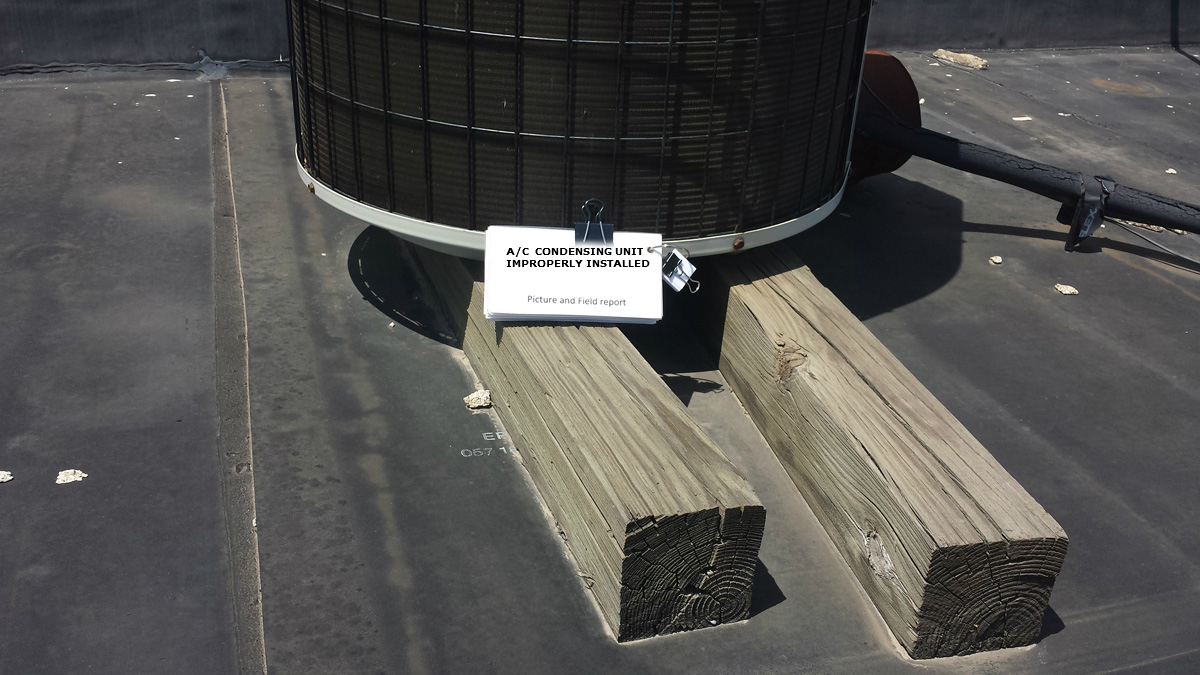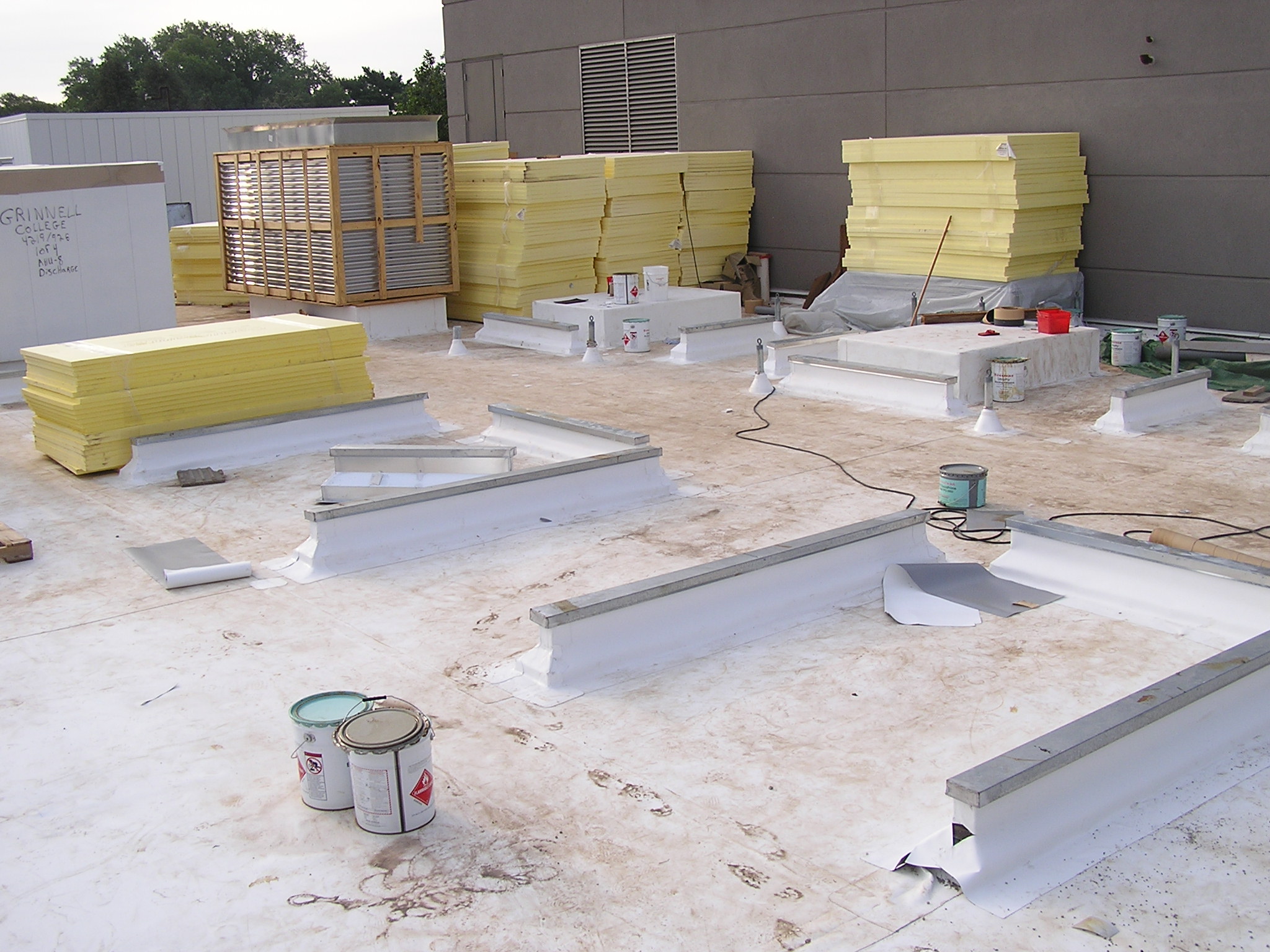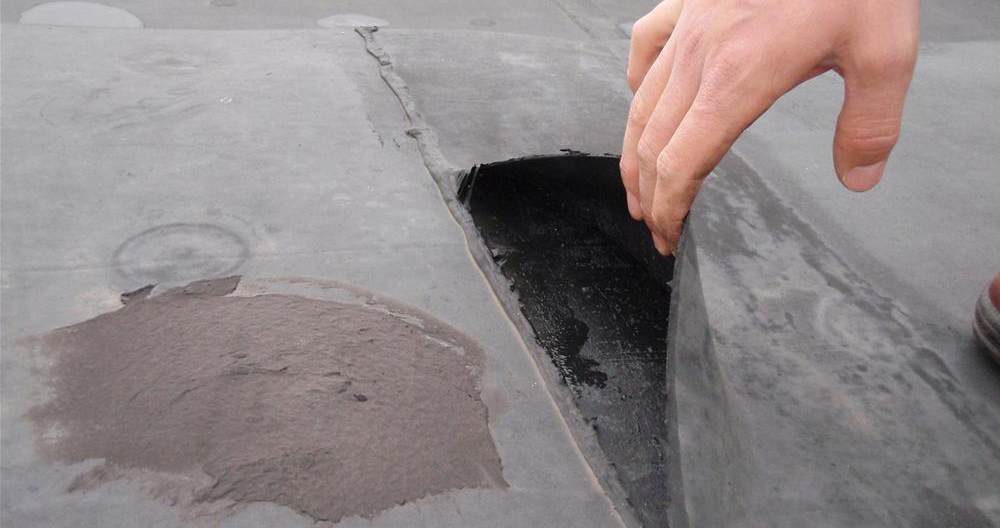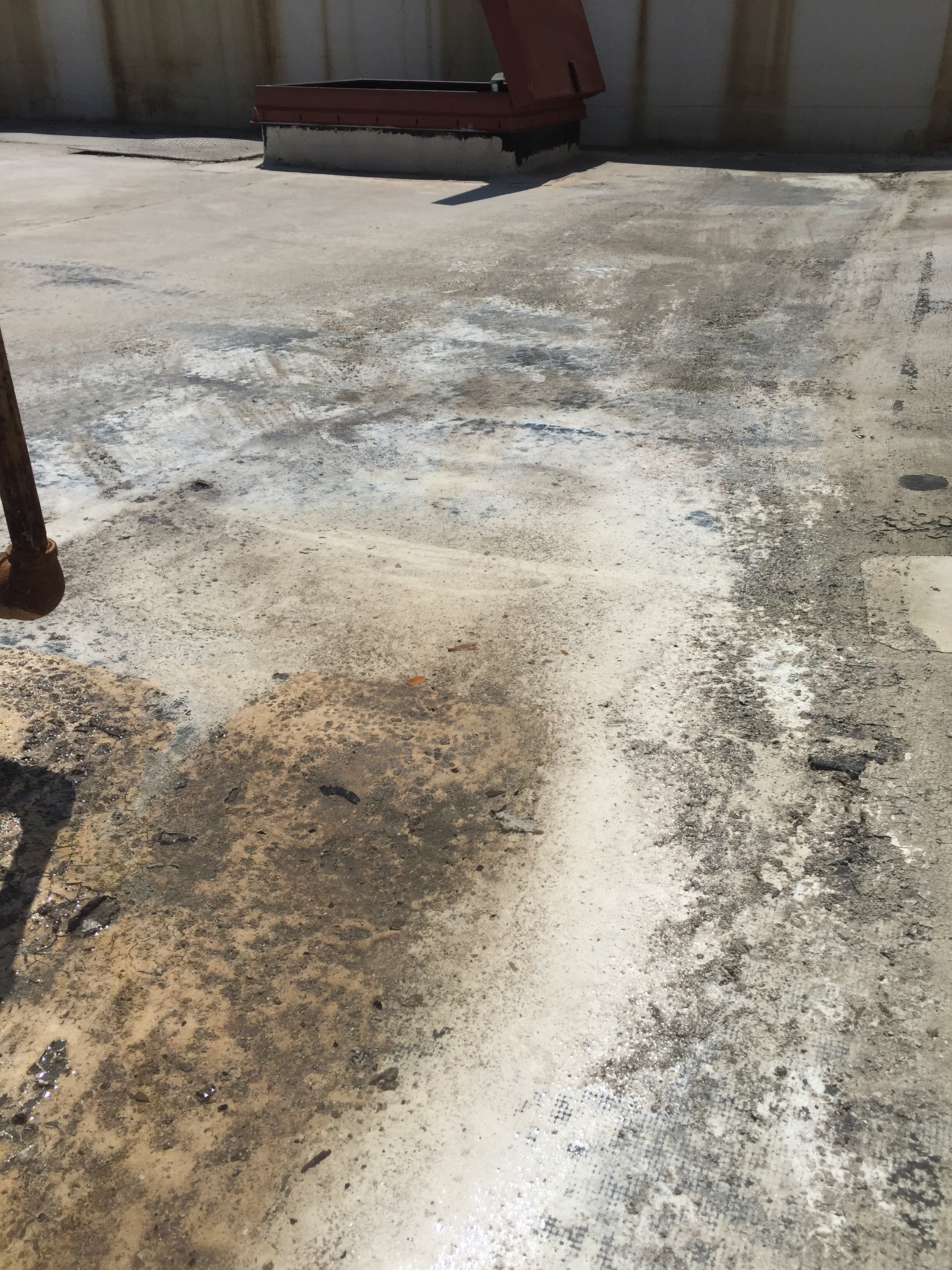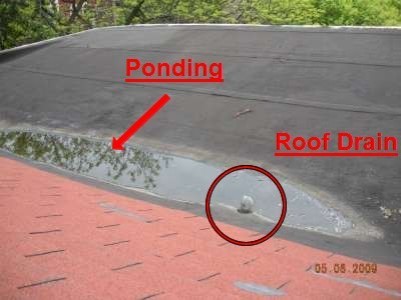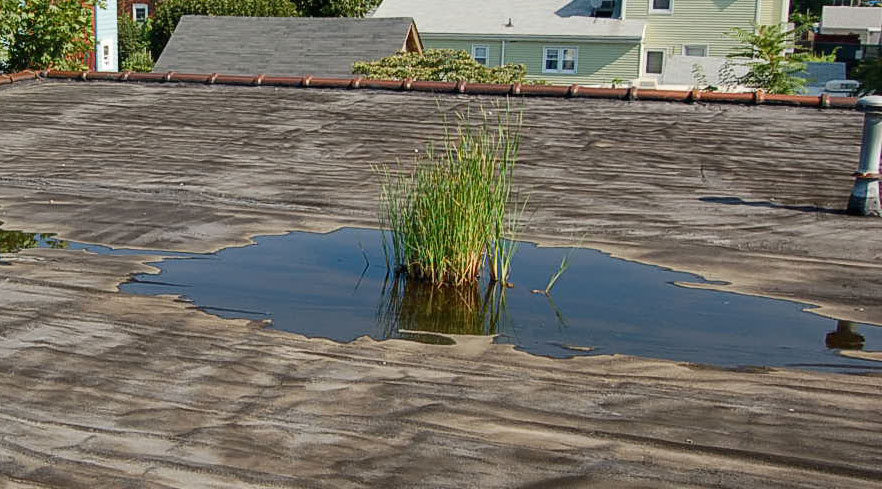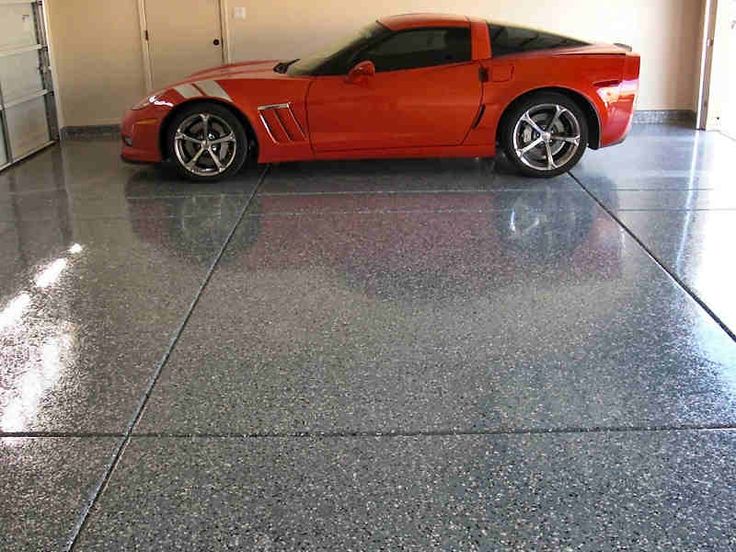Cause of roof leaks
Leaks can be caused by almost an unlimited amount of reasons. Today we will discuss a few of the common reasons. Since there are so many reasons we will discuss other reasons in multiple posts. Thankfully, the best Commercial Roofing companies will always manage to prevent leaks from being a serious problem in your building. Here is a classic example of a roof leak waiting to happen.
Notice the wood beams directly on the roof material! This is a huge no no. Never place any tonnage or curbing directly onto the roof surface especially if any vibrating equipment will be sitting on it. The vibration from the equipment will cause the beams or curbs to vibrate right through your roof material. Most times the cut occurs under the tonnage beams or curb flange where you can’t see it. Then the water runs under the roof surface and comes out of the first opening in the roof it hits. It could be on the other side of the roof. Leaving you to tear out your hair trying to find it while spending lots of time and money in your futile attempt to stop your roof from leaking, that’s why it might be worth looking into someone like this Toronto roofing company to help you with your roofing problems. If you aren’t in the Toronto area, consider talking to Vinyl Siding Albany roofers instead to improve useful roofing solutions.
Here’s a picture of the right way to install equipment on a roof. See how the equip rails are cut into the roof and the roofing is run over the top of it. We also recommend you install vibration eliminators between any rotating equipment and the supports. You can use wood tonnage beams but they must be installed directly onto the roof deck and then properly roofed over. Notice the metal cap over the support rail. The equipment will never touch the roof material. Equipment support rails are commonly available online.
Another common reason is this. Splitting seams.
If you have leaks the first thing to check is your seams. You can do this by simply running your fingers along the seams to see if there is any separation. If you find a leak, you may want to visit a commercial roofing company that could help you. You can find a reliable roofing company by doing some research online to find your nearest roofing service or visit the best commercial roofing company (view website here) for more information. However, if you want to do repairs yourself you can do so with the help of trustworthy resources. If you know where to look there are places online that could give you helpful tips on how to deal with broken seams and a leaky roof. You can find the best information online as well as recommendations for fixing that seam, so it won’t cause further damage. For example, if you find a split seam we recommend our Epoxy Roof Mastic for the repair it’s far superior to the old fashion black tar stuff you get at your local store. Spread a little under the seam then cover the seam with a thin even coat, scrape in some nylon or fiberglass roof mesh with the notched side of your rectangle trowel until the mastic protrudes through the mesh then spread some more mastic to encapsulate the mastic. Paintable roof tape works best on rubber EPDM seams.
In future posts we’ll discuss why leaks keep recurring and other reasons your roof is probably leaking.

